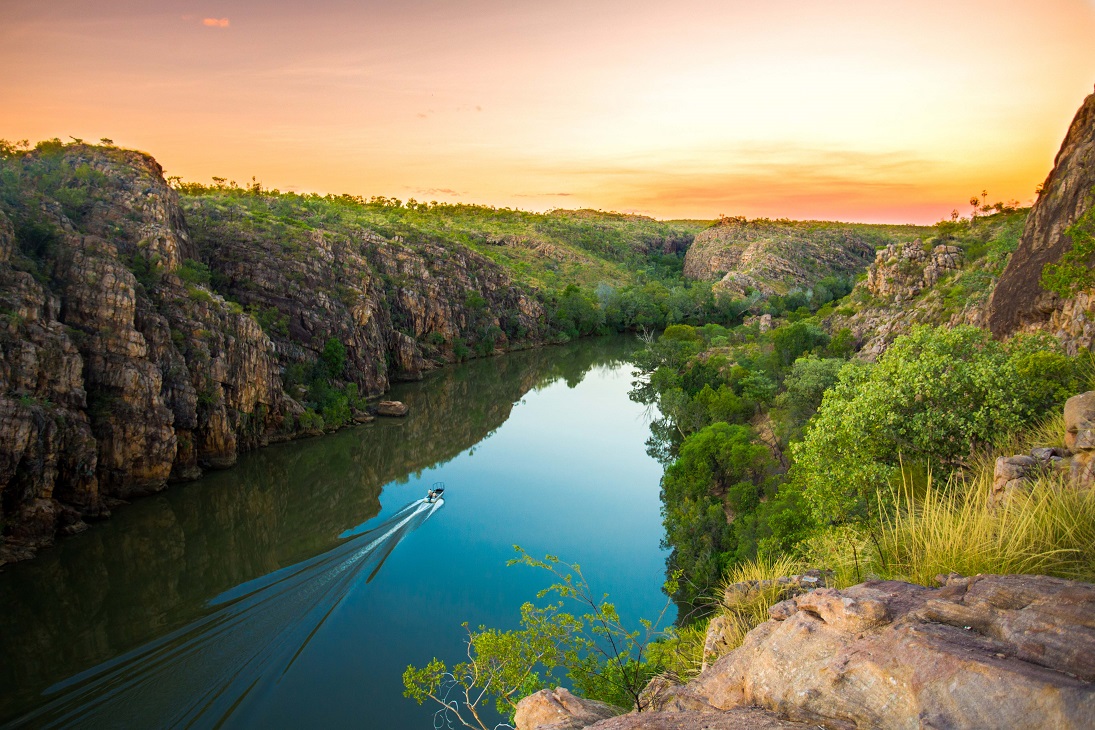Katherine River

Katherine River is situated in Australia’s Northern Territory. It is a significant tributary of the Daly River, with headwaters in Nitmiluk National Park, and flows through the town of Katherine. The river flows gracefully, carrying with it a rich tapestry of cultural heritage and significance. For centuries, this iconic waterway has served as more than just a source of sustenance and transportation—it has been a spiritual sanctuary, a meeting place, and a living connection to the land for Indigenous peoples and other communities alike. In this comprehensive exploration, we delve into the depths of why the Katherine River holds such profound cultural importance, examining its role in shaping identity, fostering traditions, and preserving ancestral knowledge.
Ancient Connections:
The cultural significance of the Katherine River traces back to ancient times, when Indigenous peoples first inhabited the land. For Indigenous communities such as the Jawoyn, Warlpiri, and Dagoman peoples, the river was a central part of their spiritual and cultural identity. It provided not only essential resources for survival, such as water and food, but also served as a sacred place where Dreaming stories were born and passed down through generations.
Dreaming stories, or creation myths, are integral to Indigenous cultures and are often associated with specific landmarks and natural features along the Katherine River. These stories explain the origins of the land, its flora and fauna, and the relationships between people and the environment. By preserving and sharing these stories, Indigenous communities maintain a deep connection to the river and reaffirm their cultural heritage.
Ceremonial Practices:
Throughout history, the Katherine River has been a site for ceremonial practices and cultural gatherings among Indigenous peoples. Rituals such as corroborees, ceremonies, and initiations were held along the riverbanks, bringing communities together to celebrate, mourn, and connect with the spiritual realm.
One example of a significant ceremonial practice along the Katherine River is the Jawoyn’s annual Walking with Spirits festival. This cultural event celebrates the connection between people, land, and spirit, featuring traditional dances, storytelling, and art exhibitions. The festival not only honors the cultural heritage of the Jawoyn people but also fosters cross-cultural understanding and appreciation among attendees.
Artistic Expression:
The Katherine River has long inspired artistic expression among Indigenous and non-Indigenous communities alike. From ancient rock art sites depicting hunting scenes and Dreaming stories to contemporary art installations and performances, the river serves as a muse for creative endeavors that celebrate its beauty and significance.
Indigenous artists, in particular, draw upon their cultural connection to the Katherine River to create works of art that reflect their spiritual beliefs, connection to country, and ongoing struggle for land rights and recognition. Art forms such as painting, weaving, carving, and storytelling serve as vehicles for preserving cultural traditions and expressing contemporary Indigenous identities.
Environmental Stewardship:
In addition to its cultural significance, the Katherine River plays a vital role in environmental stewardship and conservation efforts. Indigenous communities have long been at the forefront of caring for the land and waterways, using traditional knowledge and practices to sustainably manage natural resources and protect ecosystems.
Initiatives such as Indigenous Protected Areas and Land and Sea Management programs empower Indigenous communities to take an active role in managing and protecting their traditional lands, including the Katherine and its surrounding habitats. By integrating traditional ecological knowledge with modern conservation practices, these initiatives contribute to the preservation of cultural and environmental values for future generations.
Cross-Cultural Understanding:
The cultural importance of the Katherine River extends beyond Indigenous communities to encompass broader society, fostering cross-cultural understanding and reconciliation. Through initiatives such as cultural tourism, educational programs, and collaborative partnerships, non-Indigenous Australians and visitors from around the world have the opportunity to learn about and engage with Indigenous cultures and perspectives.
Cultural exchange programs, art exhibitions, and storytelling sessions along the Katherine provide platforms for sharing knowledge, building relationships, and bridging cultural divides. By acknowledging and respecting the cultural significance of the river, individuals and communities can work together to promote social justice, equality, and mutual respect.
Conclusion:
In conclusion, the Katherine River holds a profound cultural importance that transcends time and space, connecting past, present, and future generations through shared heritage and shared responsibility. From ancient connections to contemporary expressions, the river continues to shape identities, foster traditions, and inspire stewardship among Indigenous and non-Indigenous communities alike.
As we reflect on the cultural significance of the Katherine, let us honor and celebrate its role as a living symbol of resilience, diversity, and harmony. By embracing the values and teachings embedded within its waters, we can forge a path towards a more inclusive, equitable, and sustainable future for all.
Know More about the Katherine River.
What are The Religious Places of the Katherine River?
When Did The Katherine River Basin Become a Focus?
Where is The Katherine River Located?
Who Were The Key Historical Figures and Civilizations of The Katherine River?
How to Reach Katherine River?




